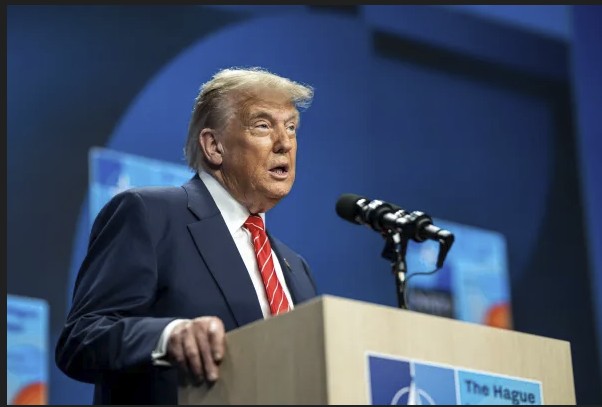
Just days after President Trump’s historic NATO breakthrough forced allies to double defense spending, the economic dividends are already materializing. European Union Council President Antonio Costa confirmed Friday that NATO’s agreement to raise defense spending targets from 2% to 5% of GDP “has solved the main trade-related issue between Europe and the United States” and will see Europe “buy American” weapons, directly rebalancing trade relations.
Republicans have long argued that Europe’s underinvestment in defense placed an unfair burden on U.S. taxpayers and distorted the transatlantic alliance. Since World War II, the United States has carried that burden, maintaining the world’s strongest military even after ending conscription in 1973. In 2024, the U.S. spent $997 billion on defense, more than double the $485 billion spent by all European NATO members combined.
The gap in capability is even wider.
Most European countries slashed defense budgets after the Cold War and phased out conscription, shifting resources toward expansive welfare systems now strained by mass migration. Only nine countries in Europe still maintain mandatory service, and most offer civilian alternatives that the majority of young men choose over military duty. Major powers like the UK, Germany, France, and Spain ended conscription decades ago. As a result, European militaries have steadily weakened, leaving the continent dependent on American power for both deterrence and defense.
During his first term, Trump embarrassed NATO allies by publicly calling them “freeloaders” and accusing them of being “delinquent,” claiming that “many countries owe us a tremendous amount of money from many years back” because “the United States has had to pay for them.”
While Trump didn’t literally present a bill for US defense services, he used language that suggested allies owed money for decades of American military protection and made it clear he viewed the arrangement as the US subsidizing European defense.
He consistently demanded that NATO members increase their defense spending beyond the existing 2% of GDP target, publicly shaming countries that failed to meet even that modest threshold and threatening consequences for those who continued to rely on American taxpayers to fund their security.
During his first term, Trump publicly called NATO allies “freeloaders” and accused them of being “delinquent,” arguing that the U.S. had been subsidizing European defense for decades. He demanded that members meet and exceed the 2% spending target, often shaming countries that failed to comply. His pressure campaign has now produced results: the 5% pledge far exceeds what even conservative think tanks like the Heritage Foundation had proposed.
Costa confirmed that a portion of this spending will go toward buying American weapons, representing potentially hundreds of billions of dollars in future sales. Between 2014 and 2024, European NATO members and Canada raised defense spending from 1.43% to 2.02% of GDP. Jumping to 5% marks an unprecedented shift.
Defense Secretary Pete Hegseth has emphasized that as Europe assumes more responsibility for its own defense, the U.S. can redirect resources toward countering China in the Indo-Pacific. The NATO agreement thus supports both longstanding strategic priorities and Trump’s domestic agenda, including expanded defense funding in the new budget bill.
The increased European defense commitment marks the most significant shift in burden sharing in NATO’s 75-year history. It also signals international recognition of President Trump’s leadership and a clear rejection of claims that American power is in decline. Assertions that the world could move on without U.S. trade and military protection have been proven false.
NATO Secretary General Mark Rutte said Trump “deserves all the praise” for the breakthrough, asking, “Would you ever think that this would be the result of this summit if he would not have been re-elected president?” The European Union is now rushing to finalize new trade agreements with Washington ahead of Trump’s July deadline for reciprocal tariffs, a textbook case of “The Art of the Deal” in global diplomacy.
As the Heritage Foundation noted, Europe’s adoption of Trump’s agenda reflects a strengthened Atlantic alliance. His vision of “peace through strength” is producing real results, for American workers, defense contractors, and U.S. strategic interests. In a time of great power rivalry, only the United States, not Russia, not China, and not even Britain, France, or Germany, could have achieved this kind of realignment.
If anyone still wonders: America is back.

















